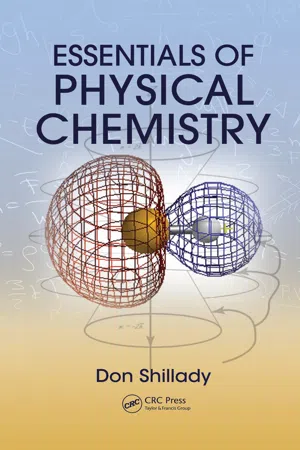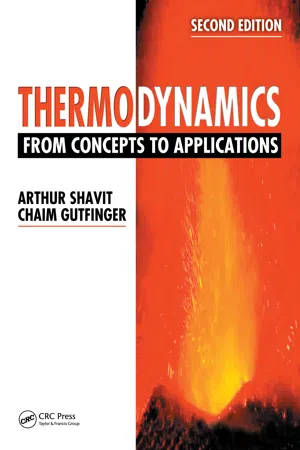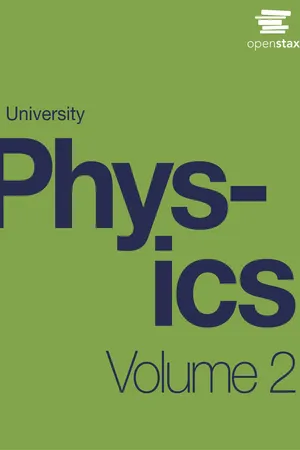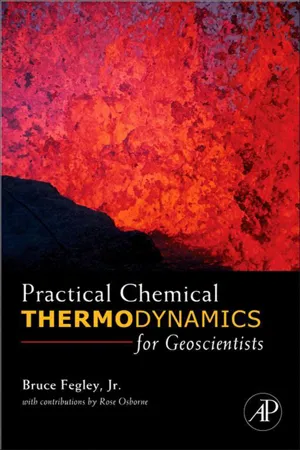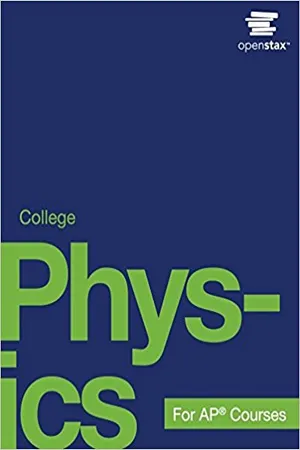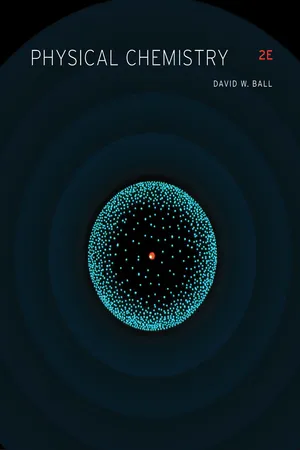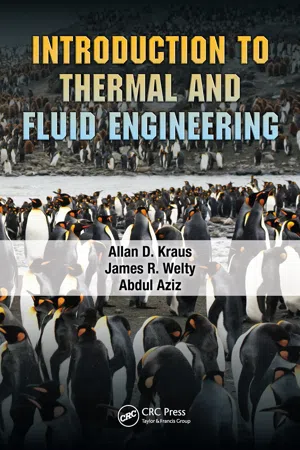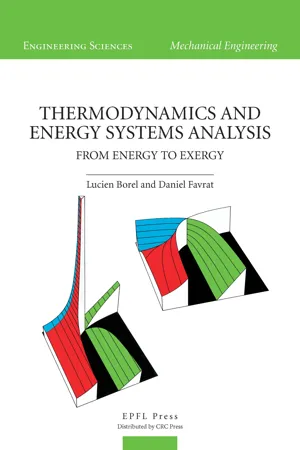Technology & Engineering
Application of First Law of Thermodynamics
The application of the First Law of Thermodynamics in technology and engineering involves the conservation of energy within a system. This principle is used to analyze and design various energy conversion processes, such as engines, power plants, and refrigeration systems. By accounting for the transfer of heat and work within these systems, engineers can optimize their efficiency and performance.
Written by Perlego with AI-assistance
Related key terms
1 of 5
12 Key excerpts on "Application of First Law of Thermodynamics"
- eBook - PDF
- Don Shillady(Author)
- 2011(Publication Date)
- CRC Press(Publisher)
4 The First Law of Thermodynamics INTRODUCTION In the previous chapter, we sharpened our computational skills and gained an appreciation for the particle model of gases. We now turn our attention to matters of energy and energy fl ow according to the laws of thermodynamics. In the Math Review chapter, we showed that energy can fl ow between various forms of kinetic and potential energy but that overall energy is conserved and only the form is changed. Many things can be said about thermodynamics. Mainly, thermodynamics owes more to the steam engine than the steam engine owes to thermodynamics. That means that Watt [1] and other inventors built steam engines and got them to work using raw mechanical reasoning and then thermodynamics was developed = discovered to understand the principles of the engine. We will try to help you gain a foundation of understanding if you will follow along and use pencil and paper to write out some derivations rather than just read the text. It should be understood that while physics majors develop expertise in electromagnetic theory far more than chemistry majors, it is generally true that chemistry majors gain a better understanding of thermodynamics. Chemical engineers use thermodynamics as their main expertise, although augmented by kinetics and transport theory, so the chemistry professionals should take pride that thermodynamics is ‘‘ their thing, ’’ their chance to shine in terms of the scienti fi c method. Thermodynamics is necessarily more abstract than the study of mechanical devices because it is not always easy to see ‘‘ heat. ’’ You will soon see that thermodynamics is wonderful for providing information about ‘‘ after-minus-before ’’ processes, but often it tells us little about the mechanism of the process being considered. The good news is that we do not need to know the details of the mechanism of a process, but the bad news is that often thermodynamics does not provide any means to determine the mechanism. - eBook - PDF
Thermodynamics
From Concepts to Applications, Second Edition
- Arthur Shavit, Chaim Gutfinger(Authors)
- 2008(Publication Date)
- CRC Press(Publisher)
21 3 Work, Energy, and Heat: First Law of Thermodynamics The terms work, heat, and energy are used in everyday language, sometimes interchangeably. Intuitive understanding of these terms is not sufficient for thermodynamic analysis and may lead occasionally to erroneous results. In this chapter, these terms are carefully defined. It is shown that they represent three discrete noninterchangeable concepts with a distinct relationship among them. The first law of thermodynamics is stated for a closed system and is shown to lead to the law of conservation of energy. 3.1 Work in Mechanical Systems Work in mechanics is defined as the scalar product of a force F and the displacement of its point of application d r . For a differential displacement the work is d d W F r ⋅ (3.1) In thermodynamics, where interactions are regarded from the point of view of a system, this definition may be interpreted as follows: when a system applies a force on its sur-roundings, causing a displacement at the boundary, the scalar product of the force and the boundary displacement is the work of the system. This work obviously causes changes in the environment, for example, the change in the level of a weight in a gravitational field or the stretching of a spring. As far as the system is concerned all these changes are equiva-lent insofar as they are caused by identical changes in the system and at its boundaries. So far, only the modes of work, where the force and the displacement can be easily iden-tified, have been considered. In works associated with electric, magnetic, and other phe-nomena, it may be difficult to identify the force and the displacement. The definition of work in thermodynamics is more general and covers all its possible modes, including the work in mechanics. - eBook - PDF
- Robert Resnick, David Halliday, Kenneth S. Krane(Authors)
- 2016(Publication Date)
- Wiley(Publisher)
23-8. 23-3 THE FIRST LAW OF THERMODYNAMICS In Chapter 13 we discussed the fundamental concept of conservation of energy in a system of particles. As we did in the case of conservation of momentum in Chapter 7, we concentrated our attention on a particular collection of par- ticles or objects that we defined as our system. We drew an imaginary boundary that separated the system from its envi- ronment, and then we carefully accounted for all interac- tions between the system and its environment. Sometimes, as in the case of momentum conservation, we characterize those interactions in terms of forces. Other times it is more convenient to characterize those interactions in terms of en- ergy transfer. We are free to define our system in any convenient way, as long as we are consistent and can account for all energy transfers to or from the system. For example, we might de- 23-3 The First Law of Thermodynamics 521 Figure 23-7. Air rises by convection around a heated cylin- der. The dark areas represent regions of uniform temperature. Radiation from the Earth Solar radiation T S = 5800 K Earth T E = 300 K Figure 23-8. Solar radiation is intercepted by the Earth and is (mostly) absorbed. The temperature T E of the Earth adjusts it- self to a value at which the Earth’s heat loss by radiation is just equal to the solar heat that it absorbs. fine the system to be a block of metal that is at a lower tem- perature than its environment, so that the interaction in- volves a transfer of heat from the environment to the block. Or we might define a system to be water and ice that are mixed together in an insulated container. In this case there is an exchange of energy within the system but no interac- tion with the environment. - eBook - PDF
RealTime Physics: Active Learning Laboratories, Module 2
Heat and Thermodynamics
- David R. Sokoloff, Priscilla W. Laws, Ronald K. Thornton(Authors)
- 2012(Publication Date)
- Wiley(Publisher)
Instead, we have to learn to draw system boundaries and total the mechanical work done by the system inside a boundary on its sur- roundings outside the boundary. The first law of thermodynamics is a very general statement of conservation of energy for thermal systems. It is not easy to verify in an introductory physics laboratory, and it is not derivable from Newton’s laws. Instead, it is an indepen- dent assertion about the nature of the physical world. There are many ways to achieve the same internal energy change, U. To achieve a small change in the internal energy of gas in a syringe, you could trans- fer a large amount of heat energy to it and then allow the gas to do work on its surroundings. Alternatively, you could transfer a small amount of heat energy to the gas and not let it do any work at all. The change in internal energy, U, could be the same in both processes. U depends only on Q W and not on Q or W alone. Question 3-7: Can you think of any situations where W is negligible and U Q? (Hint: Is it necessary to do work on a cup of hot coffee to cool it? Can you think of similar situations?) Question 3-8: How could you arrange a situation where Q is negligible and in which U W? Such situations have a special name in thermodynamics. They are called adiabatic processes. (Adiabatic means with no heat energy transferred into or out of the system.) 78 REALTIME PHYSICS: HEAT AND THERMODYNAMICS This page is intentionally left blank LAB 4: THE FIRST LAW OF THERMODYNAMICS 79 HOMEWORK FOR LAB 4: THE FIRST LAW OF THERMODYNAMICS 1. Describe what happens to the temperature of liquid water between 0 and 100°C when heat energy is transferred to it at a constant rate. 2. Describe what happens to the temperature of a water–ice mixture originally at 0°C when heat energy is transferred to it at a constant rate. Sketch a tem- perature history on the axes below. Indicate on your graph where the ice has completely melted. - eBook - PDF
- William Moebs, Samuel J. Ling, Jeff Sanny(Authors)
- 2016(Publication Date)
- Openstax(Publisher)
The approach to equilibrium for real systems is somewhat more complicated than for an ideal monatomic gas. Nevertheless, we can still say that energy is exchanged between the systems until their temperatures are the same. 3.3 | First Law of Thermodynamics Learning Objectives By the end of this section, you will be able to: • State the first law of thermodynamics and explain how it is applied • Explain how heat transfer, work done, and internal energy change are related in any thermodynamic process Now that we have seen how to calculate internal energy, heat, and work done for a thermodynamic system undergoing change during some process, we can see how these quantities interact to affect the amount of change that can occur. This interaction is given by the first law of thermodynamics. British scientist and novelist C. P. Snow (1905–1980) is credited with a joke about the four laws of thermodynamics. His humorous statement of the first law of thermodynamics is stated “you can’t win,” or in other words, you cannot get more energy out of a system than you put into it. We will see in this chapter how internal energy, heat, and work all play a role in the first law of thermodynamics. Suppose Q represents the heat exchanged between a system and the environment, and W is the work done by or on the system. The first law states that the change in internal energy of that system is given by Q − W . Since added heat increases the internal energy of a system, Q is positive when it is added to the system and negative when it is removed from the system. When a gas expands, it does work and its internal energy decreases. Thus, W is positive when work is done by the system and negative when work is done on the system. This sign convention is summarized in Table 3.1. The first law of 116 Chapter 3 | The First Law of Thermodynamics This OpenStax book is available for free at http://cnx.org/content/col12074/1.3 - Bruce Fegley Jr., Bruce Fegley, Jr.(Authors)
- 2012(Publication Date)
- Academic Press(Publisher)
Chapter 3
The First Law of Thermodynamics
Die Energie der Welt ist konstant. (The energy of the universe is constant.)—Rudolf Clausius (1865)Es ist unmöglich, eine Maschine zu bauen, die fortwährend Wärme oder äußere Arbeit aus Nichts schafft. (It is impossible to construct a machine which continuously produces heat or external work out of nothing.)—Walther Nernst (1924)In this chapter we discuss the first law of thermodynamics, which is the principle of the conservation of energy applied to heat and work. The first law is integral to our daily life because the operation of automobile and truck engines, equipment in factories, and air conditioning and heating systems is based on it.This chapter is divided into five sections. In Section I , we briefly review the history of some of the key experiments and ideas that led to the development of the first law. In Section II , we present the first law of thermodynamics and discuss some of its implications. In doing so, we introduce several new variables: internal energy (E ), which is a state function; work (w ) and heat (q ), which are path-dependent functions; enthalpy (H ), which is a state function; and the constant-pressure and constant-volume heat capacities (CPandCV). We also discuss pressure-volume work and the concept of reversibility. In Section III , we apply the first law to reversible processes involving ideal gases. Section IV describes adiabatic processes in planetary atmospheres. Section V is a discussion of other types of work.I Historical Overview of Ideas about Heat and Work
A The caloric theory of heat and its demise
Today it might seem obvious to us that heat is different from temperature. However, from ancient times until the late 18th century most scientists and philosophers made no distinction between the two phenomena. Sir Francis Bacon (1561–1626) was a notable exception because he concluded that heat is a form of motion. His ideas were later accepted by Robert Boyle and Sir Isaac Newton (1642–1727) as well as a few others, but the prevailing view was that heat was a weightless fluid known as caloric . The word caloric is derived from calor- eBook - PDF
- Paul Peter Urone, Roger Hinrichs(Authors)
- 2012(Publication Date)
- Openstax(Publisher)
Like all natural laws, the second law of thermodynamics gives insights into nature, and its several statements imply that it is broadly applicable, fundamentally affecting many apparently disparate processes. The already familiar direction of heat transfer from hot to cold is the basis of our first version of the second law of thermodynamics. The Second Law of Thermodynamics (first expression) Heat transfer occurs spontaneously from higher- to lower-temperature bodies but never spontaneously in the reverse direction. Another way of stating this: It is impossible for any process to have as its sole result heat transfer from a cooler to a hotter object. Heat Engines Now let us consider a device that uses heat transfer to do work. As noted in the previous section, such a device is called a heat engine, and one is shown schematically in Figure 15.17(b). Gasoline and diesel engines, jet engines, and steam turbines are all heat engines that do work by using part of the heat transfer from some source. Heat transfer from the hot object (or hot reservoir) is denoted as Q h , while heat transfer into the cold object (or cold reservoir) is Q c , and the work done by the engine is W . The temperatures of the hot and cold reservoirs are T h and T c , respectively. Chapter 15 | Thermodynamics 571 Figure 15.17 (a) Heat transfer occurs spontaneously from a hot object to a cold one, consistent with the second law of thermodynamics. (b) A heat engine, represented here by a circle, uses part of the heat transfer to do work. The hot and cold objects are called the hot and cold reservoirs. Q h is the heat transfer out of the hot reservoir, W is the work output, and Q c is the heat transfer into the cold reservoir. Because the hot reservoir is heated externally, which is energy intensive, it is important that the work is done as efficiently as possible. In fact, we would like W to equal Q h , and for there to be no heat transfer to the environment ( Q c = 0 ). - eBook - PDF
- David Ball(Author)
- 2014(Publication Date)
- Cengage Learning EMEA(Publisher)
We will also introduce heat capacities and Joule-Thomson coefficients, both of which are related to temperature changes in systems. We will end the chapter by recognizing that the first law of thermodynamics is limited in its predictions, and that other ideas—other laws of thermodynamics—are needed to understand how energy interacts with matter. 2.2 Work and Heat Physically, work is performed on an object when the object moves some distance s due to the application of a force F . Mathematically, it is the dot product of the force vector F and the distance vector s : work 5 F # s 5 0 F 0 0 s 0 cos u (2.1) where u is the angle between the vectors. Work is a scalar, not vector, quantity. Work has magnitude, but not direction. Figure 2.1 shows a force acting on an object. In Figure 2.1a, the object is not moving, so the amount of work is zero (despite the amount of force being exerted). In Figure 2.1b, an object has been moved, so work was done. The First Law of Thermodynamics 2.1 Synopsis 2.2 Work and Heat 2.3 Internal Energy and the First Law of Thermodynamics 2.4 State Functions 2.5 Enthalpy 2.6 Changes in State Functions 2.7 Joule-Thomson Coefficients 2.8 More on Heat Capacities 2.9 Phase Changes 2.10 Chemical Changes 2.11 Changing Temperatures 2.12 Biochemical Reactions 2.13 Summary Copyright 2013 Cengage Learning. All Rights Reserved. May not be copied, scanned, or duplicated, in whole or in part. Due to electronic rights, some third party content may be suppressed from the eBook and/or eChapter(s). Editorial review has deemed that any suppressed content does not materially affect the overall learning experience. Cengage Learning reserves the right to remove additional content at any time if subsequent rights restrictions require it. 32 Chapter 2 | The First Law of Thermodynamics Unless otherwise noted, all art on this page is © Cengage Learning 2014. Work has units of joules, like energy. This is not without a reason: Work is a way to transfer energy. - eBook - PDF
The Dynamics of Energy
Supply, Conversion, and Utilization
- Horacio Perez-Blanco(Author)
- 2009(Publication Date)
- CRC Press(Publisher)
But simply applying a torch to the cart will not make your job of pushing it any easier; the heat input will increase the cart’s internal energy but not its kinetic or potential energy. Equation 1.13 indicates that energy is conserved, and that internal energy, heat, and work are interchangeable. The First Law fails to indicate that, in all actual systems, some of the work input will end up as heat and not as energy, and con-versely that some of the work output will be dissipated as heat before it can be used. 22 The Dynamics of Energy: Supply, Conversion, and Utilization Example 1.7 discusses sustainability of a simple conversion process and the First Law. Example 1.7 First Law, using internal energy A closed system is operating at a certain instant delivering work at a rate dW/dt , inputting heat at a rate dQ/dt , and reducing its internal energy at a rate dE/dt . a. Calculate dE/dt for the following values. dW dt dQ dt = = 32 17 3 kW kW . b. What would be the consequence of attempting to perform this operation for a long time regarding the system temperature? (The system does not have kinetic or potential energy, only internal energy.) Solution System: The given closed system a. The First Law reads: dE dt dQ dt dW dt = -= -= -17 3 32 14 7 . . kW b. For a system with only internal energy, the main consequence of extended operation in this mode would be that the energy stored (and the tempera-ture) in the system would decrease, eventually becoming null, and the process could not be sustained any longer. Example 1.8 discusses power and heat rates in an engine converting thermal energy into power. Example 1.8 First Law over a cycle An engine works in a cycle with a period Ti. - Allan D. Kraus, James R. Welty, Abdul Aziz(Authors)
- 2011(Publication Date)
- CRC Press(Publisher)
As a word statement, the first law of thermodynamics is Q System E 2 – E 1 W FIGURE 3.8 A system with both heat and work interaction between the system and its surroundings. Energy and the First Law of Thermodynamics 47 The change of total energy (kinetic, potential, and internal) is equal to the net heat transferred to the control mass minus the work done by the control mass. We may also observe that either of Equations 3.12 and 3.13 demonstrate the conservation of energy principle: Energy may neither be created nor destroyed but may be converted from one form to another. 3.6 The Energy Balance for Closed Systems 3.6.1 Processes Equation 3.12 E 2 − E 1 = Q − W (3.12) indicates that over a time interval ⎧ ⎨ ⎩ the change in energy content within a system ⎫ ⎬ ⎭ = ⎧ ⎪ ⎪ ⎨ ⎪ ⎪ ⎩ the net amount of energy transferred into the system boundary as heat ⎫ ⎪ ⎪ ⎬ ⎪ ⎪ ⎭ − ⎧ ⎪ ⎪ ⎨ ⎪ ⎪ ⎩ the net amount of energy transferred out of the system boundary as work ⎫ ⎪ ⎪ ⎬ ⎪ ⎪ ⎭ (3.13) Equation (3.12) may be written using total or specific quantities. We will find it con-vienient to use a form that places the properties at state 1 and the heat transfer on the left-hand side and the properties at state 2 and the work interaction on the right-hand side. This is consistent with the conventions that we have adopted for the direction of the heat flow and whether work is done on or by the system. Thus, in terms of total energy, we have 1 2 m ˆ V 2 1 + mgz 1 + U 1 + Q = 1 2 m ˆ V 2 2 + mgz 2 + U 2 + W (J) (3.14a) or in terms of specific energy, 1 2 ˆ V 2 1 + gz 1 + u 1 + Q m = 1 2 ˆ V 2 2 + gz 2 + u 2 + W m (J/kg) (3.14b) We may write Equation 3.13 as E = Q − W Then, over some time interval, this becomes E t = Q t − W t and in the limit as t −→ 0 dE dt = ˙ Q − ˙ W (3.15) With dE dt = d KE dt + d PE dt + dU dt- Lucien Borel, Daniel Favrat(Authors)
- 2010(Publication Date)
- PPUR(Publisher)
However, in practice, providing work is dif- ferent from providing heat. Furthermore, it is not equivalent to provide heat at a high as opposed to at a low temperature. The Second Law renders it possible to account for these differences of “quality” and “levels” of energy. The Second Law of thermodynamics may be formulated in the following man- ner: The variation of the entropy of any thermodynamic system, caused by internal processes can only be positive or null (entropy creation). (1.67) δS r δS t δS x δS i ≥ 0 J K ⎡ ⎣ ⎢ ⎤ ⎦ ⎥ Generalities and Fundamental Laws 39 The First Law considers all processes to be equally possible, and does not take into account process irreversibilities or include the concept of equilibrium. The Sec- ond Law, on the other hand, determines a preferred direction of evolution of the Fig. 1.17 Typical thermodynamic systems. Thermally insulated wall Thermally conducting wall System boundary δQ αβ δQ αβ Open, deformable, heat conducting wall 40 Thermodynamics and Energy Systems Analysis: from Energy to Exergy processes and renders it possible to specify the conditions of equilibrium of the thermodynamic state of a system. The Second Law is an empirical law established by experimental observation. It is a postulate which can be approached in several ways and which can give rise to different formulations. The formulation presented above is the most compact. It implicitly contains all the classical formulations and, in particular, renders it possi- ble to determine those that are based upon the properties of single thermal source cycles or upon those of two thermal source cycles such as the one by Carnot (Chap- ter 13). Taking into account Equations (1.65) and (1.66), Relation (1.64) can be written as follows: (1.68) We first consider the different contributions separately, particularly cases of simple systems, in order to give entropy a concrete meaning. Subsequently, we will treat more general cases related to any system.- eBook - PDF
- Donald T. Haynie(Author)
- 2008(Publication Date)
- Cambridge University Press(Publisher)
In general, (food intake) – (waste excreted) ¼ (change in body weight) þ (heat) þ (work), according to the First Law of Thermodynamics. (C) A very simple heat engine. The rubber band contracts when heated, lifting a weight. Because the weight is translated against the force of gravity, work is done. Thus, some portion of the heat is turned into work. The efficiency of this engine is low! Panel (C) is based on Fig. 44–1 of Feynman et al . ( 1963 ). 8 See Ueber die Erhalting der Kraft (Berlin: Reimer, 1847). Helmholtz was son of a teacher of philosophy and literature at the Potsdam Gymnasium, a top-grade secondary school; his mother was descended from William Penn, a Quaker who THE FIRST LAW IN OPERATION 35 proposed in 1842 by the German physiologist Julius Robert von Mayer (1814–1878). 9 It is interesting that a physiologist played such an important role in establishing one of the most important concepts of thermodynamics. When a system does work on its surroundings, w makes a negative contribution to 1 U because the system loses energy. Similarly, if heat is lost from the system, q makes a negative contribution to 1 U . In other words, 1 U measures the net amount of energy change in the system; it is the difference between the energy gained from the surroundings and the energy lost to the surroundings. Let’s look at some examples of Eqn. ( 2.1 ) in action. James Prescott Joule (1818–1889), son of a brewer in Manchester, England, is famous for his studies on the conservation of thermal energy understood as the mechanical equivalent of heat (1843). Perhaps the best-known experiment Joule did was to monitor the temperature of a vat of water during stirring.
Index pages curate the most relevant extracts from our library of academic textbooks. They’ve been created using an in-house natural language model (NLM), each adding context and meaning to key research topics.
